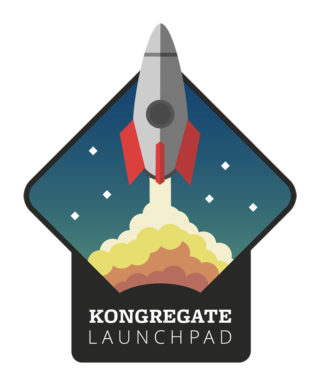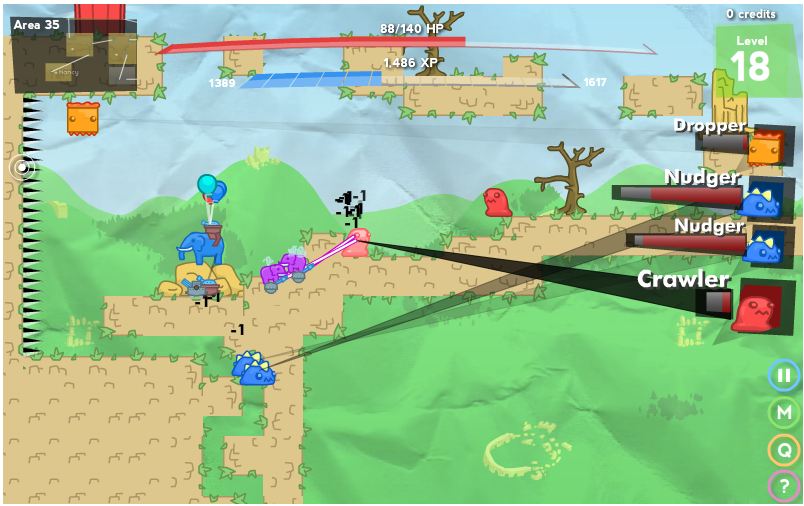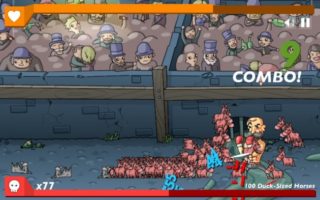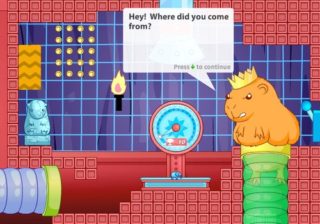Are you an independent developer? Then, hear ye year ye! This talk from Casual Connect Asia 2016 gave real life examples of various pitches that Kongregate has heard over the years and how to learn and improve from them. John Cooney and Melinda Montano described how you can pick the right publisher for you and your game and also stand out to a publisher. Remember: “A publisher is not an ATM Machine.” - John Cooney. To hear more from Melinda and John, see the session video below.
DOWNLOAD SLIDES
John Cooney, a veteran game developer, has developed and published more than one hundred games, with plays in the hundreds of millions. John has been with Kongregate since 2012, directing their incubator for emergent game design, Launchpad. With extensive experience in developing games, including Head of Game Development at Armor Games, John is in the perfect position to understand the conditions a game developer faces. Recently Casual Connect asked John to describe this background and work and offer insights into the game industry.

Casual Connect: Tell us about the work you do at Kongregate. How did you come to work there?
John Cooney: Before I worked at Kongregate I was working on independent games, and Kongregate was one of the earliest websites to feature my games. My first game appeared on Kongregate back in 2006. Back at that time I got to know the founders and most of the staff, who, at the time, were in startup mode and working out of a small San Francisco apartment. Over the course of a decade I watched Kongregate grow into an amazing place for game developers and players, and I knew it was something I needed to become a part of. I joined Kongregate in 2012. While I still make games, my focus is in our Launchpad program, an incubator for funding new and experimental games.

John: In college (UC Davis, 2007), I founded my first game studio out of my apartment, which worked as a mix of self-published games and client work. The studio was built out of a love for making games, but also a need to pay for tuition and room. The first few months were rough, but towards the end of college the studio was more than profitable. During that time about 25 games were published.
CC: What do you do in your free time? What are your hobbies?
John: I am also a landscape photographer and rock climber. Weekends you can find me heading to the mountains or desert for landscape photography work and on week nights I will be at the climbing gym bouldering up the newest problems!
CC: What is your favorite thing about your job?
John: I get to talk to motivated game developers every single day. As a game developer myself, it’s incredible to get in the mind of developers and understand their games and how we can help.
CC: What inspired you to pursue this career?

John: I was really into 2D animation, leveraging tools like Adobe Flash to make short-length animated films. Out of necessity I had to learn to build some scripted interaction into my movies (rewind, fast-forward, pause, etc.). These small scripts turned into much larger projects, which blossomed into a full-fledged game development career.

In college I had a game development studio but wasn’t even convinced I wanted to be a game developer. I was still really fixated on traditional animation and was interviewing with animation studios to see what came next in my career. I realized really quickly that working at traditional animation studios didn’t give me the creative breathing room I enjoyed as an indie, and self-realized just how awesome it was to work on so many facets of design as a game developer. I’ve been in games ever since.
CC: Do you have any advice for someone interested in pursuing the same career?

John: I tell new developers to build their own games and don’t stop building, ever. So many game developers hope to get into game development with no experience and having never built anything on their own. The experience that comes with creating your own work is tremendous and builds a deeper knowledge of games. It’s great to work for a studio, but building on your own is critical to a developer’s success in the long run.
CC: What was your dream job as a child?
John: I always wanted to get into biology or working with animals. I loved animals as a kid and still do today. I end up putting a lot of animals in my games; maybe 80% of my games star an animal. I rarely make games with humans in them.
CC: In your younger years was there anything that hinted at your future career path in gaming? Did you expect to end up where you are today?
John: I am absolutely shocked I ended up in game development. I played very few video games growing up. My childhood home was fairly anti-video games, so there wasn’t a lot of time for gaming. When I left for college, my fascination with games really erupted. I was suddenly exposed to years of gaming I missed out on. Many kids got to grow up with every modern console, but I was just beginning to play the classic NES games. I spent all of college playing catch up, and that fast-track really got me excited about games.
CC: When and how did you first become interested in art/design/coding?

John: I was building traditional 2D animations for years before I ever got into game programming and design. I’ve always been a creative, and I’m horrendously bad at sticking to any discipline too long, so eventually video games came into my viewport and I had to try it out. Games ended up being a perfect place for me. I like having my hands on several different creative pieces at once. . . art, UI, animation, programming. . . there’s so many disciplines I can get into with game development that I never get tired of it.
CC: What is your creative process like? Where do you begin?
John: My games are incredibly simple; they are just dressed up like more complex experiences. I start with a set of mechanics that I want to work with; then I’ll continue to distill them until they can no longer be simplified. If I can’t explain it in a single sentence then it’s probably too complicated. “You are a hammer-wielding businessman hitting turtles to create massive chain reactions.” Or, “You are playing the same level over and over again, but the level is slightly different each time.” Then, on top of that core idea, I build out the game play and core loop. And, on top of that, over dress the game in particles, colorful art and clean design. That’s basically my game formula.
CC: Where do you find the most inspiration for your designs? What’s the most interesting thing you found inspiration from?
John: Most of my design comes from random conversations with friends, family and co-workers. “Wouldn’t it be funny” is the start of probably half the games I’ve ever worked on. Very few of my successful designs come from sitting in a room brainstorming.
CC: If you had unlimited resources and time, what kind of game would you create?
John: I’ve never worked on a 3D game. Every concept I’ve worked on is in the 2D space, and I’ve never really had time to explore 3D design.
CC: What is the most challenging part of game development for you?
John: Programming. I know that’s a boring answer, but I honestly don’t like game programming, and it’s often about 80% of my job. Other game developers laugh when I admit that; most developers are writing code all day.
CC: What methods do you use to handle creative blocks? Do creative blocks occur frequently?
John: I have never really had a creative block. I have more problems with too many game ideas than I have time for. I have about 10 prototypes sitting shelved that have never been fully developed.
CC: What was a painful experience you have found your way out of? How did you do it?
John: Maybe the most painful experience was developing a synchronous multiplayer server game as a solo developer. The game relies on hundredths of a second in accuracy in a racing setting, which is incredibly difficult to execute, especially for a worldwide audience with latency and varying level of internet connectivity. Having never done anything in multiplayer before, I bit off way more than I could chew, and ended up learning to do server-side programming with live-servicing and game balancing all in the span of weeks. Fortunately, the game was executed well and ended up amassing 25m+ plays.

John: My proudest moments are when game development students email me telling me they’re in video games because they grew up playing my games. I would have never thought my games would have such an impact on anyone.
CC: What do you think will be the next big trend in the industry in the next three to five years? How are you incorporating this trend into your future plans?
John: I think games will continue to grow its audience as the accessibility and stigmas subside and we gain confidence that everyone should and can play games. Likewise, the ease of creating games will continue to lower the bar to entry of new game developers, with tools and services becoming much more robust and well-adopted. The fact that we can teach kids to create video games from a young age is incredible to me, and I think it’s only going to get stronger. Everyone should make games.
The next few years should also see the evolution of VR and its adoption into the mainstream. Ultimately, its success will be important to games, but also in applications beyond gaming, and I think it will be critical for VR to be embraced from both inside and outside gaming for it to succeed.

Finally, I think we’ll see an industry moving closer to ubiquity. Games are getting more and more cross-platform, and we’re seeing games showing up on multiple platforms from the same build. It’s a great time for games.
Comments












